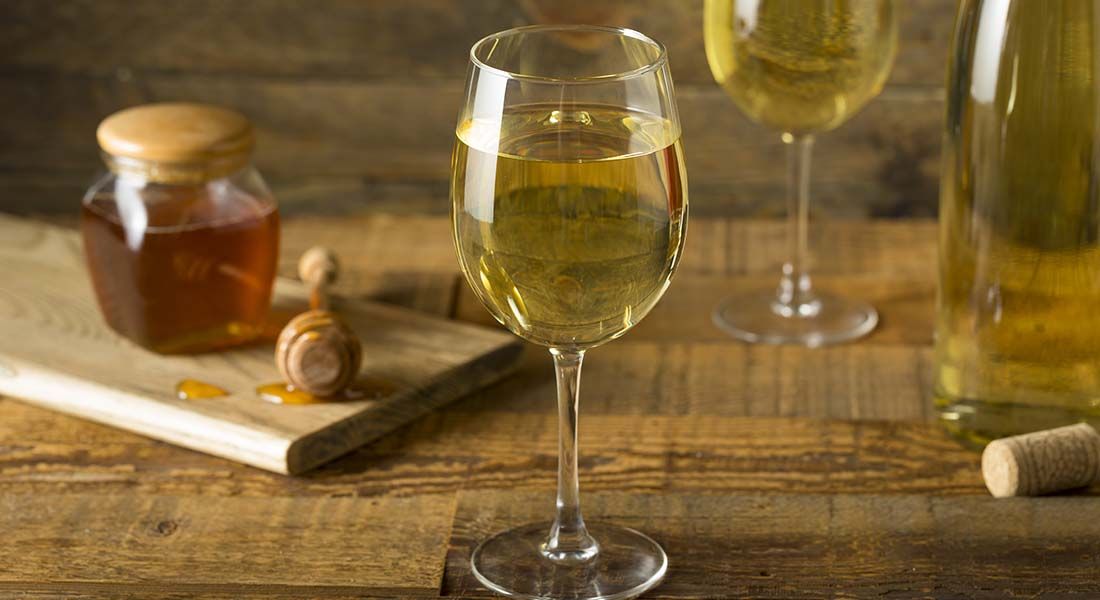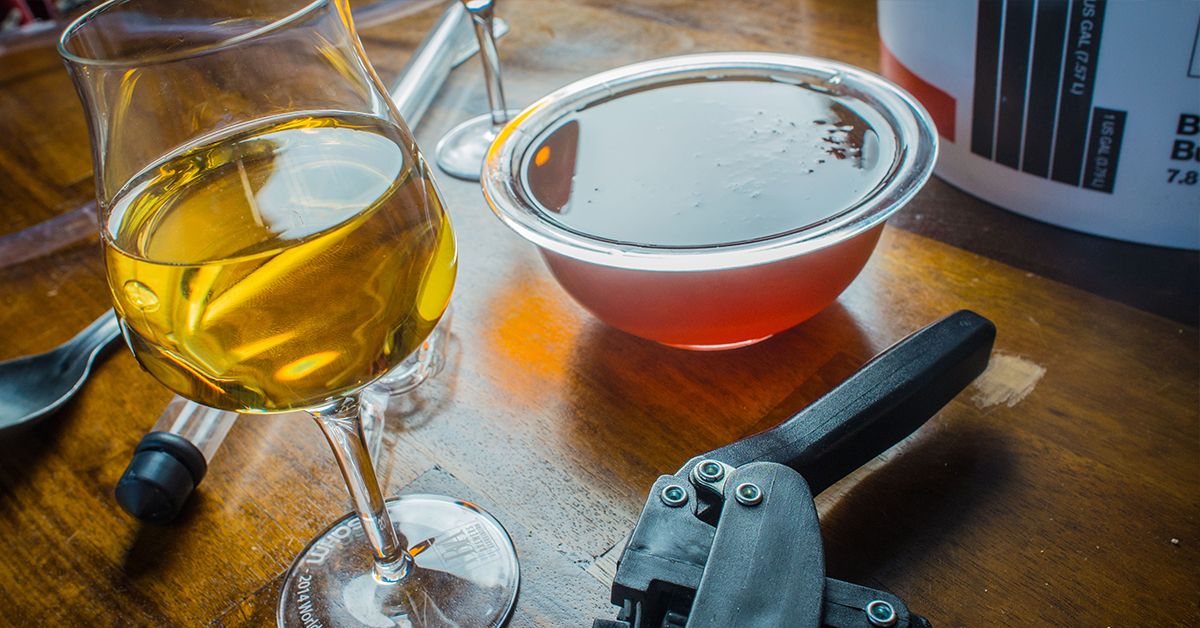
How to make mead yourself without wasting money
With the denomination of Hidromiel or Aguamiel, it is understood that the drink comes from the alcoholic fermentation of cooking of honey diluted in drinking water. If you want to make mead with fruits, you can use blackberries, plums, strawberries, cherries or any fruit or fruit mix characteristic of the season. These must be clean, healthy, and mature. They must be added during the boiling of water and honey before placing the yeasts. Let’s discover the recipe on how to make mead.
How to make mead?
If you want to make flavored mead, you can add aromatic herbs, spices or a mixture of them, among others: cinnamon, juniper, cloves, nutmeg, chamomile, thyme, tarragon, rosemary, and mint. These should be clean and should be added during the boiling of water and honey, before placing the yeast.
For processors who have experience and wish to prepare their recipes, it is good to take into account that on average, for every 250 grams of honey dissolved in 10 liters of water, 1 alcoholic degree is generated. If you want to obtain a mead of 12 ° alcoholics, then you will need 3 kilos of honey in 10 liters of water.
Making mead is a process that is developed based on the following steps:
- Sterilization
- Cooking
- Fermentation
- Maturation and clarification
- Bottling
Sterilization
All the material must be clean and sterilized. Any error in this aspect can cause the mead to be defective or not drinkable. Fundamental on all the fermentation equipment and utensils that are used.
Cooking
Start by adding the honey to the water in the pot to mix. It is advisable to heat the honey to favor its dissolution. The resulting liquid is called must.
If you want to prepare fruity mead, the desired fruits or herbs should be added. In this case, the fruits or herbs should be selected and washed.
It is recommended to eliminate the fruits that are too ripe, the parts hit, bruised, the pits and seeds, then process in a blender and add to the pot.
The resulting must be ready to ferment. It is advisable to carry out a heat treatment to prevent contamination, eliminate turbidity, and improve the final quality of the mead.
Boil
The wort is boiled at 100 ° C for approximately 10 minutes. The heat favors the reaction between the waxes and proteins of the honey, generating foam on the liquid. This form must be removed as cooking is carried out.
The boiling has the advantage of sterilizing the must and removing waxes and proteins that will develop turbidity in the final product. You get a crystalline mead. It has the disadvantage of eliminating some characteristic aromas of honey, which will be responsible for characterizing the final product.
Pasteurize
The wort is heated at 65 ° C for about 15-20 minutes. During this treatment, proteins and waxes are eliminated and in smaller quantity the characteristic aromas of honey.
When finishing any of the heating processes chosen, it is necessary to cool the must room temperature (temperature near 25 ºC).
At this stage, it is recommended to separate a portion of water in the refrigerator to add to the hot preparation, and quickly achieve the desired temperature (take into account the desired final volume).
If it is still hot, wait for the temperature to stabilize with the environment. Once the temperature is close to 20 ° C, the must density should be measured.
This stage is essential to correct the amount of honey or water according to the type of mead and adjust if necessary. The must is then poured into the container intended for fermentation.
Fermentation
Fermentation is essentially a process carried out in a container generally called a fermentor. This is where the sugar that is present in the honey is transformed by the action of the yeasts in ethyl alcohol and carbon dioxide (releasing heat).
The fermentation vessel will be a fermenter made of stainless steel, food plastic or a glass carafe, closed employing a fermentation valve (airlock) that allows the CO2 that is generated during the fermentation process to escape, but that does not allow the air to enter. Exterior.
Primary fermentation
The success in the elaboration of the mead depends fundamentally on making an optimum primary fermentation, for this, it is necessary to maintain the hygiene throughout the production process mainly in
the equipment and utensils.
The main objective of this process is to obtain the highest amount of alcohol from the sugar of honey. Once the must with the yeasts is found in the fermenter, a gentle agitation must be carried out to incorporate oxygen into the preparation as well as to homogenize it.
Mead in the process of fermentation
Finally, it must be covered with a fermentation valve to protect the wort from some external contamination as well as allowing the elimination of carbon dioxide (CO2) that generates pressure inside the fermentation vessel.
This stage, often called tumultuous fermentation (because a foam form on the liquid looks like it is boiling), can last between 7 and 10 days and it is recommended to keep the temperature between 20-25 ºC in a place away from the sunlight.
It is recommended to measure the temperature and the degrees daily, to have the follow-up of the fermentation with the information about the transformation of the sugar in alcohol. This is done until reaching a constant density, that is, where this process is considered finished.
Once the tumultuous fermentation is finished, where a constant density is reached, the sediments that were precipitated during the process must be separated.
These sediments are made up of dead yeasts and organic matter that, if they do not separate quickly, begin to give off unpleasant aromas to the liquid and contribute turbidity. This operation of separating solids is called “transfer.”
During the execution of the first transfer, the crystalline mead must be extracted through the upper part of the container, taking care that the sediments are kept below and not sucked by the extractor hose.
These extracted sediments are placed in smaller containers allowing them to be compacted and obtaining the remaining liquid to increase the yield. The deposits should never be mixed with the decanted mead.
Maturation and clarification
Once the separation of the solids has been carried out, the fermentation of the liquid is continued, but this is done in a much slower way since the amount of sugar remaining in the must is very low, and the amount of yeast decreases due to the transfer.
This stage is called maturation, and it is where the aromas and the organoleptic characteristics of the mead improve, due to the separation of the must from the sediments that are produced during the primary fermentation.
Once the time necessary for decanting the remaining turbidity (protein and yeast remnants), which is approximately between 10-20 days, the second racking must be carried out.
The second transfer consists in separating the limpid mead from the precipitated fine sediments, constituted by the solids remaining from the first racking. It must be done by extracting the mead from the top of the container, taking care not to drag the sediments. They are discarded.
Bottled mead
If the resulting liquid becomes cloudy, clarification is necessary. The particles that remain in suspension require the use of coagulants that help them to precipitate. The most used clarifiers are bentonite, egg white or algae, among others.
Once the clarifier is added, stir gently so that all the particles suspended in the mead come in contact with it and let it rest for 7 to 10 days in a cool place away from the light. Once the cake of solids is obtained at the bottom of the container, carry out the last transfer.
It should be noted that when the processor has sufficient experience, the secondary fermentation can be prolonged and clarification can be made before the second racking. In this way, the producer guarantees to make only two racking during the whole process.
For bottling, use bottles that withstand pressure: bottles of beer, champagne or cider, since in the container you can still carry out a small fermentation or even be more significant if you want to obtain a gassed and foamy mead. Therefore, we will add about 7 -8 gr of dextrose (sugar) for each liter purchased.




